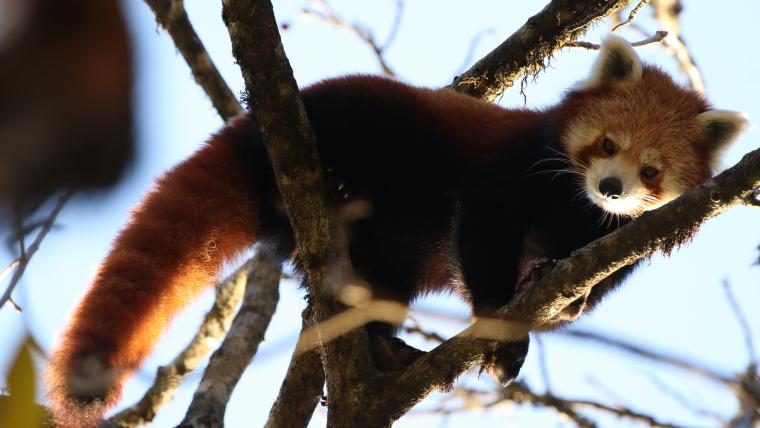
Bamboo shoots and balancing acts: how to keep red pandas living the high life
In Nepal’s dense treetops, crisp autumn leaves trickle to the floor. A strange figure dipped in bright auburn hues bounces between branches, camouflaging with the canopy. Suddenly, a thick, ringed tail emerges from the foliage, revealing a rare creature many have never seen – the red panda. While it might be lesser-known in comparison to the giant panda, in these forests, it’s the star of the sky.
Red pandas can be sighted from the mountainous regions of the eastern Himalayas to central China. Although they share a few characteristics with the black-and-white giants, they are not at all related. In fact, these mysterious animals are the only living members of the Ailuridae family. The size of a common house cat, adult red pandas typically weigh in at around five kilograms, making them nimble up in the air. Adapted to life above ground, their bushy tails also aid their balance when landing daredevil jumps.
Although small, the red panda’s appetite is anything but modest. They relish in a hefty helping of bamboo leaves, and can consume up to 20 000 a day. Fresh fruit, roots, acorns, and eggs are also on the menu. After devouring a sizable meal, the pandas retire to the treetops to settle their protruding tummies. To shield them from the summer sun, unique tear-track markings stream from their eyes and function as a powerful sunscreen. Similar to the giant panda, they also have a modified wrist bone that acts like a thumb, enabling them to outmanoeuvre predators. But even in the highest trees, they are not safe.
Red pandas are endangered. As few as 2 500 are estimated to live in the wild and that number is predicted to fall. In the last 20 years, deforestation has decimated their homes, destroying nesting sites and foraging grounds. They were once widely hunted for their fur coats and tails, and remain in high demand in the illegal pet trade. But there’s a group of people keeping these acrobatic pandas from plummeting. The Red Panda Network is the first NPO solely dedicated to conserving this species. Working directly with Nepalese communities, they promote sustainable practices and empower locals to protect the red panda’s habitat. By supporting organisations like this, we can keep this remarkable creature in the canopies for centuries to come.
Footage by the Red Panda Network was used in the creation of this film.






























Please sign in to leave a comment